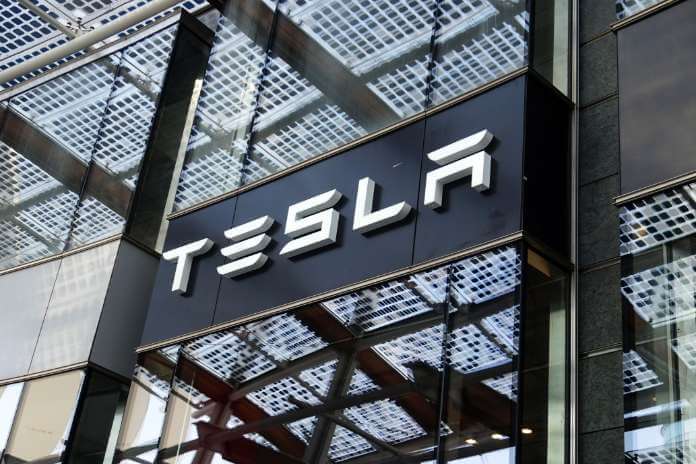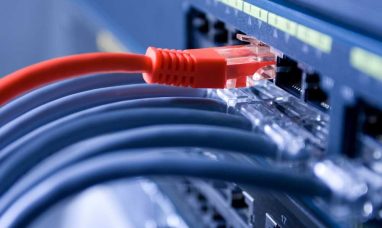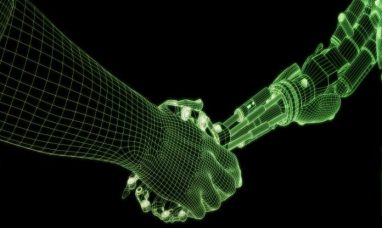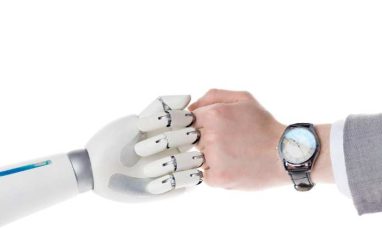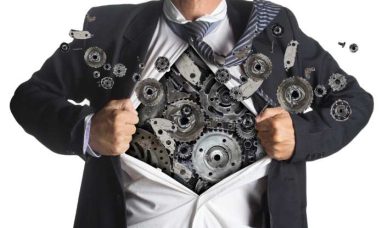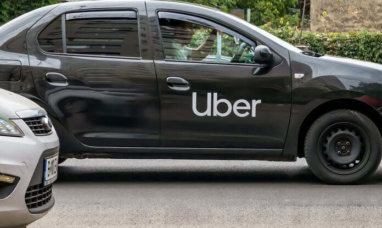Tesla Inc (NASDAQ:TSLA) and BYD Co. (BYDDF) are EV giants growing quickly. Tesla and BYD are leading the way, even though a lot of attention is paid to startups like Rivian Automotive (RIVN), Lucid (LCID), Nio (NIO), Xpeng (XPEV), and Li Auto (LI), as well as traditional automakers like General Motors (GM) and Ford Motor (F) that are getting into EVs.
On October 2, Tesla (NASDAQ:TSLA) said it had a record number of deliveries in the third quarter, but they were much lower than expected as worries about China’s demand grew. On AI Day on Friday night, Tesla showed off a prototype of an Optimus humanoid robot. The humanoid prototype had very little mobility.
BYD will share sales numbers for Q3 in the next day or two. The electric vehicle (EV) and battery giant’s sales have gone through the roof and moved into new markets, including Europe.
In a bear market, Tesla stock is up from its lowest point in 2022 but has hit key resistance. BYD stock has fallen to levels not seen in six months.
Let’s look at Tesla vs. BYD — and Tesla stock vs. BYD stock.
Tesla Vs. BYD Sales
Tesla said that it delivered 343,830 cars in Q3. That was 42% more than the same time last year and 35% more than Q2’s 254,695 when Covid lockdowns forced the Shanghai plant to close for a long time and get back to work slowly. The number for Q3 also easily beat the record of Teslas sold in Q1, which was 310,048.
But that was much less than what analysts thought Tesla would deliver, which was more than 360,000. This wasn’t a case where there wasn’t enough. In the last quarter, Tesla made 365,923 cars, more than 22,000 more than delivered.
Tesla sold 325,158 Model 3 and Model Y cars and 18,672 Model S and Model X luxury electric cars in Q3.
BYD is likely to say that it delivered more than 500,000 cars in Q3, putting it a long way ahead of Tesla. BYD does sell both plug-in hybrids and all-electric cars called “BEVs.” Tesla still sells more BEVs than BYD, but the gap is getting smaller and smaller quickly.
On September 3, BYD said they sold 174,915 EVs and plug-in hybrids in August, which was a record. This was up 185% from a year ago and 7.6% more than they sold in July (162,530). Of the 173,977 passenger vehicles sold, 82,678 were all-electric cars, which is a 172% increase. Sales of PHEVs went up by 203%, to 91,299 units.
Tesla Vs. BYD Expansion
In March and April, Tesla opened factories near Berlin, Germany, and Austin, Texas. Model Y production at these sites is still slow, but it should get better over time.
Tesla’s Shanghai factory just got a big upgrade that will make it much easier to make cars in the future, but it slowed down production in July and early August.
There have been several signs that China’s demand for Teslas is not keeping up with production.
Tesla China’s wait times for new cars dropped sharply in September, but they had gone up slightly since the beginning of the new quarter when Shanghai started exporting cars again.
In the meantime, Tesla started offering a discount on insurance in mid-September, and they just recently extended it through the end of the year. In practice, this is a price cut, and some people think Tesla will soon announce price cuts in China.
Keep in mind that Tesla should be making many more cars in Q4, so demand worldwide will also need to rise.
Concerns about local demand could be eased if Tesla exported even more of the cars it makes in Shanghai, and there are signs that it already is. But Europe’s backlogs have also begun to go down. In August, Tesla (NASDAQ:TSLA) started selling a new low-end Model Y in Europe. The price was much cheaper than the old base Model Y, but the price ranged a lot from country to country.
BYD is also adding a lot of EV and battery power.
The auto giant said earlier this year that it wants to sell at least 1.5 million and maybe 2 million NEVs by 2022. It seems likely that more than 1.75 million packages will be sent.
On September 2, BYD Chairman Wang Chuanfu said that the company wants to deliver 280,000 cars each month by the end of the year. He wanted to send out four million packages by 2023. He also said that 700,000 cars were waiting to be made by BYD.
Tesla’s prices are much higher than BYD’s because it aims for the luxury and affordable luxury markets.
Most of BYD’s EVs and hybrids sell for between $15,000 and $34,000, but some cost more than $40,000. Prices, on the other hand, are going up.
The China-based EV giant does want to move up a lot.
BYD announced on August 30 that a high-end brand aimed at the 800,000 yuan ($115,960) to the 2 million yuan market will launch in June 2023. The brand will include an off-road vehicle, a luxury sedan, a high-end SUV, and a supercar.
Mercedes-Benz owns 10% of BYD’s Denza unit, which will soon start sending out D9 minivans. The company thinks that it will send out 3,000 packages in October and 10,000 in December. It starts at just under $50,000 and comes in EV and PHEV versions.
On August 27, Denza showed off a sporty SUV. It’s technically a concept car, but a production version of it should come out in the first quarter of 2023.
BYD Vs. Tesla: Tesla Electric Vehicles
The Roadster, the Semi, and the Cybertruck have all been delayed more than once. Musk says the Cybertruck will be ready by the middle of 2023. But prices and specs, which he says are ambitious even compared to other Tesla cars, are likely to differ from what was said about the Cybertruck in 2019.
Musk said recently that deliveries of the Tesla Semi, which was first shown off in 2017, will start this year.
If deliveries do start by the end of the year, it’s not clear if a lot of Semis will be made or just a few. In the meantime, the Cybertruck will probably serve the U.S. market mostly. So Tesla might not have a new electric car for people to ride in until at least 2024, if not later.
In the future, especially in China, an aging model lineup could be a factor.
Musk recently said that Tesla is not working on a car that costs $25,000. This was a goal he had talked about for years. Even now, there are dozens of similar models on the market, most of which come from Chinese companies like BYD.
BYD Stock Vs. Tesla Stock: BYD EVs Big And Small
BYD has a lot of different models, some of which come in electric and hybrid versions. In the next few months, the car company will release a number of new EV-only and hybrid-only models.
The Seal sedan is BYD’s first clear attempt to compete with Tesla head-on. The BYD Seal is about the same size and range as a Model 3, but it costs $10,000 less. The Seal starts at 212,800 RMB ($31,130), while a made-in-China Model 3 starts at 279,900 RMB ($41,950).
BYD started sending out Seals in late August, and over the next two months, production ramped up.
A successful launch of Seal would not only help sales grow even faster, but it could also help BYD’s brand as it moves into new markets.
A BYD Seagull hatchback will soon be available for around $12,000 on the low end.
In a few months, BYD will release the Seal Lion, an all-electric SUV that could compete with the Tesla Model Y at a much lower price.
BYD just showed off the Frigate 07, a mid-sized SUV that is the second plug-in hybrid in the Warship line. The Destroyer PHEV sedan came out in the spring and is still selling well.
BYD is also one of the biggest companies that make electric buses. It has factories in the U.S. and many other places besides China.
At its plant in Lancaster, Calif., BYD makes buses, big rigs, and other heavy vehicles for the U.S. market.
The Best Electric Vehicle Stocks to Buy and Watch
Tesla Stock Vs. BYD Stock: EV Markets
Tesla (NASDAQ:TSLA) is the biggest electric car company in the world, with most of its sales in North America, Europe, and China. It does a lot of business in Asia, especially in Korea. It has four plants. The first two are in Fremont, California, and Shanghai, China. The other two are in Austin, Texas, and the area around Berlin. Tesla already sends goods to Europe. Most of these goods come from Shanghai.
As the Berlin plant gets going, the Shanghai plant will send a lot fewer Model Ys to Europe, but it will probably keep sending Model 3s.
Even though Tesla’s capacity is growing, it doesn’t have any big new markets to enter or new vehicles coming out soon.
On August 26, Tesla started selling a new Model Y base model with less range and a much lower price in Europe. The prices vary a lot, and in some countries, they are lower than the Model 3.
The U.S. just passed new tax breaks for EVs. Under the old program, Tesla was no longer eligible, but it should still win. Limits on income and vehicle prices could have a big effect on who can buy Tesla vehicles and how much they can cost. A high and growing need for materials and parts for batteries from North America could also make things harder.
But if nothing else, the new rules, which require EVs to be made in North America, cut off tax credits for a lot of Tesla’s competitors.
China is where BYD makes and sells almost all of its cars, but that’s about to change.
BYD said on September 8 that it would build a factory in Thailand, confirming rumors from earlier in the week. The plant should start making cars in 2024, and it will be able to make 150,000 cars a year.
BYD said in August that it would enter the Thai market. This is part of the company’s plan to become a truly global auto giant. In August, exports rose from 4,026 in July to a record 5,092. In the coming months, that number should go up.
BYD has started sending out Atto 3 cars to New Zealand and Australia. Most places outside of China call the Yuan Plus “Atto 3.” In the coming weeks and months, a number of other Asian countries will join.
On September 28, BYD held a launch event for Europe. The Tang SUV, the Han sedan, and the Atto 3 were the first three models. Most of Europe will start getting their packages in October or by the end of the year. Since late 2021, BYD has been selling the Tang SUV in Norway. BYD priced its cars in Europe much higher than they were in China, which suggests that the company wants to become a premium or nearly premium brand on the Continent.
BYD has started selling EVs to individuals in India. The Atto 3 will join the lineup in October.
The EV giant will bring the Atto 3, the Dolphin/Atto 2, and the Seal/Ato 4 to Japan in early, middle, and late 2023, respectively.
Many of these countries, like the U.K., drive on the right side of the road. These include Australia, Thailand, Japan, and India. The Thai plant could make a lot of RHD cars.
BYD is ramping up its sales in Latin America, especially in Brazil.
In terms of personal electric vehicles, BYD doesn’t have America in its sights yet. Tariffs on cars made in China make it too expensive to ship them to the U.S. At its site in Lancaster, California, outside of Los Angeles, BYD does make some electric buses. The site has a lot of extra space.
Tesla Vs. BYD Batteries
Tesla doesn’t make battery cells in large quantities. The gigafactory in Sparks, Nevada, is a joint project with Panasonic, which makes the cells. Tesla buys off-the-shelf batteries from CATL in China and, more and more, in the U.S.
Lithium-iron phosphate batteries are becoming more and more popular. LFPs are cheaper than lithium-ion batteries in part because they don’t need cobalt or nickel as lithium-ion batteries do.
Tesla has been in the lead for a long time when it comes to getting more out of its batteries, but the high-end Lucid Air has more efficient batteries than Tesla.
In a pilot program, Tesla is making its own 4680 battery cells. The chemistry used in the 4680 batteries is not new. The larger form factor could save money, but there are still technical challenges.
This could change when the Cybertruck and other vehicles, like the Semi and Roadster, are ready.
BYD batteries, on the other hand, are really made at home. People think that the BYD Blade batteries, which are a special type of LFP battery, are some of the safest batteries for EVs.
In July, BYD passed LG to become the No. 2 EV battery maker in the world, but it is still a long way behind China’s CATL. Most of BYD’s growth has come from putting its own batteries in its own cars, but that will start to change.
Tesla Berlin is now getting Blade batteries from BYD. It’s a big win for BYD, which wants to be a major supplier of batteries to other automakers.
BYD batteries are used in the Ford Mustang Mach-E, which was made in China.
Toyota (TM) will use BYD batteries and motors in the bZ3, a small electric vehicle that will be sold in China. In the coming years, BYD may be a big part of Toyota’s larger push for electric vehicles (EVs).
BYD and Tesla are at the forefront of automakers trying to lock up supplies of lithium and other key battery raw materials.
Musk has talked about Tesla going into lithium mining, but it hasn’t happened yet. Tesla has recently suggested building a plant to process lithium in Tesla.
BYD is already working on several projects to mine lithium.
Tesla Beyond EVs
Tesla and BYD are not just companies that make EVs.
Tesla has businesses that deal with solar energy and battery storage, but both of them bring in a small amount of money overall.
The Supercharger network is another way Tesla makes money. It is starting to let non-Tesla cars use its Supercharger network in parts of Europe where charging stations from companies other than Tesla are common. In the U.S., Tesla’s Supercharger network is still a big advantage, but the company seems ready to open at least some stations to get new subsidies.
Tesla’s self-driving efforts have been a key revenue driver and brand builder. If Tesla can make a cheap, fully autonomous system that only uses vision, the payoff will be huge. But Full Self-Driving is not fully self-driving. Even FSD Beta is a Level 2 system that helps drivers.
The National Highway Traffic Safety Administration has made several changes to an Autopilot probe. The investigation started in 2021 by looking at crashes caused by Autopilot into stopped emergency vehicles. The NHTSA is also looking into “phantom braking,” which is when Tesla cars on Autopilot suddenly brake.
A number of Tesla cars have rear-ended motorcycles on highways, killing some people.
In July, the California DMV said that the company was misleading customers about Autopilot and FSD.
On August 18, the NHTSA asked Tesla for information about its camera inside the car. Many, but not all, Tesla cars have cameras inside the cabin to keep an eye on the driver. However, these cameras aren’t always in the right place and don’t have all the key features of a good DMS.
The NHTSA also asked Tesla for information about how it puts together its quarterly reports that talk about how safe Autopilot is. The reports don’t take into account the type of road, the driver’s age, the age of the vehicle, the weather, or other important factors.
Even so, Musk said on August 21 that Tesla would raise the price of FSD in North America from $12,000 to $15,000 on September 5, after FSD Beta 10.69.2 is released to the public.
Musk has said that Tesla is working hard to make the Tesla Bot or Optimus. At Tesla AI Day on September 30, a limited-movement prototype of Optimus was shown off. Musk said Optimus should be sold for less than $20,000 in three to five years. Most experts say that humanoid robots that can do anything are still decades away.
BYD Semiconductors, Solar, and More
BYD makes its own chips, which has helped it grow quickly over the past year while the rest of the industry had to stop making things.
The company also has businesses in solar energy and energy storage, among other things.
The chairman of BYD said on September 2 that driver-assist systems will be added to the company’s cars in 2023.
It works with a number of companies on self-driving cars. BYD has said that it will use Nvidia’s Drive system to make cars drive themselves. This comes after a deal with Baidu to work on self-driving cars (BIDU). Baidu and Nvidia (NVDA) have been working together for a long time on self-driving cars.
BYD also says that some 2023 models will have chips made by Horizon Robotics. That comes after a project to help drivers with Momenta, a company from China. BYD has also invested in the Lidar company RoboSense.
Local news outlets said in mid-July that BYD has started making its own chip for smart driving.
Tesla Stock Vs. BYD Fundamentals
Tesla’s earnings more than tripled from 75 cents in 2020 to $2.26 per share in 2021. In 2019, they were only 1 cent per share.
In Q2, Tesla’s earnings grew by 57%, and its revenue grew by 42%, both of which beat expectations. This happened even though there were a lot of problems, like the long production stoppage in Shanghai and its slow return. Compared to Q1, earnings and sales dropped.
In 2021, BYD’s income went down. The amount of money spent on capital expenditures (CapEx) in 2018 and 2019 put together was more than what was spent on capital expenditures in 2018 and 2019. In the past few months, the number of EVs and PHEVs that can be made has gone up and is still going up. This is causing huge increases in sales and profits this year and in the future.
On August 29, BYD said that its Q2 net profit grew by 197% compared to the same time last year in local currency, while its revenue grew by 68%. Net profit leapt 245% vs. Q1.
The net income for the first half was 3.59 billion yuan. That was at the high end of the EV giant’s preliminary estimate for the first half, which was between 2.8 billion and 3.6 billion yuan on July 14.
Analysts think that BYD’s profits and margins will get better in the second half as the company increases production and moves upmarket.
Technicals for Tesla Stock vs. BYD Stock
MarketSmith’s analysis shows that as of September 30, Tesla stock was down 24.7% this year, but it is still above its lows from 2022. It is doing better than BYD stock, which is down 27.3% after losing solid gains for 2022 from its record highs in late June.
In November, TSLA stock hit a record high of $414.46. In April, shares got close to those levels, but then they fell hard. On May 24, shares fell to an 11-month low of 206.84, which was just over 50% lower than their all-time high.
After TSLA’s earnings report on July 21, the stock shot up and blew past short-term levels. A few days earlier, it had already passed the 50-day line.
On September 21, TSLA stock was almost at its short-term highs from August 16, but the market went down after the Fed raised interest rates. By September 23, the shares had dropped below their 200-day and 50-day lines.
Starting August 16, Tesla stock will have short consolidation within a much larger base, with a buy point of 314.74. In the last two weeks, shares have dropped because the market has been falling. They are getting close to the bottom of their bottom base.
The RS line has moved back a little and is now close to where it was in early April.
On July 12, BYD fell because there were rumors that Warren Buffett would sell some or all of his longtime stake. According to a filing with the Hong Kong exchange on August 30, Berkshire Hathaway sold 1.33 million H-shares on August 24. Berkshire sold 1.72 million shares on September 1.
In September 2008, Berkshire bought 225 million H-shares of BYD. People rushed to get out of the market because they thought Buffett would keep selling BYD stock. Based on all share classes, Berkshire owns less than 8% of BYD.
On August 30, BYD stock dropped below its 200-day line. Shares have kept dropping in price, falling to their lowest levels in six months.
Tesla Stock Market Cap
When it comes to market cap, there is no comparison between Tesla stock and BYD stock. It costs $831.15 billion to buy Tesla. This is a lot more than BYD’s $67.4 billion.
The market value of BYD is more than what Rivian and Lucid stock are worth together. It’s also more than GM and Ford are worth.
The Tesla stock, a big player in the S&P 500, is backed by a wide range of institutions, including many IBD-style mutual funds and other A+ funds. Ark Invest’s ETFs still hold a lot of Tesla stock.
BYD stock has a lot less big sponsorship, but Buffett’s Berkshire has been a notable investor for years. Cathie Wood’s Ark also has a small amount of ownership. Buffett and Wood are both investors in very few stocks.
BYD stock is listed in Hong Kong and Shenzhen, but in the United States, it is only traded over the counter. That also means the BYDDF stock chart has a lot of small gaps.
Tesla Stock Vs. BYD Stock
In a lot of ways, BYD is what Tesla says it wants to be or wants to be. BYD makes its own batteries, chips, and a lot of other important parts. It will soon sell its batteries to Tesla as well as to other car companies. Musk has talked about making a $25,000 Tesla for a long time. BYD already makes money selling a lot of electric vehicles for $25,000 or less. Musk has thought about going into lithium mining. Already, BYD is.
BYD’s sales of EVs and PHEVs have blown past Tesla’s, and the automaker is speeding up production and moving toward more expensive cars. At the moment, Tesla sells a lot more pure electric cars than BYD, but the gap is getting smaller, and Tesla’s prices are much higher. Both are doing very well financially.
BYD is expanding into a number of large markets, and more will follow in the coming weeks and months.
Both of these EV giants are making a lot more cars than their competitors, though Tesla does have some worries about demand.
In 2021, Tesla stock and BYD stock were two of the best-performing EV stocks. Both have gone down a lot this year. Even though Tesla stock is below key levels, it is not that far from possible buy points. This is true even though there are worries about Tesla demand in China. Even though the business is doing well, BYD stock is a long way from its highs and needs a lot of fixing.
So, Tesla stock vs. BYD stock? Keep an eye on them if you’re an investor.
Featured Image: Megapixl © Segiomonti









